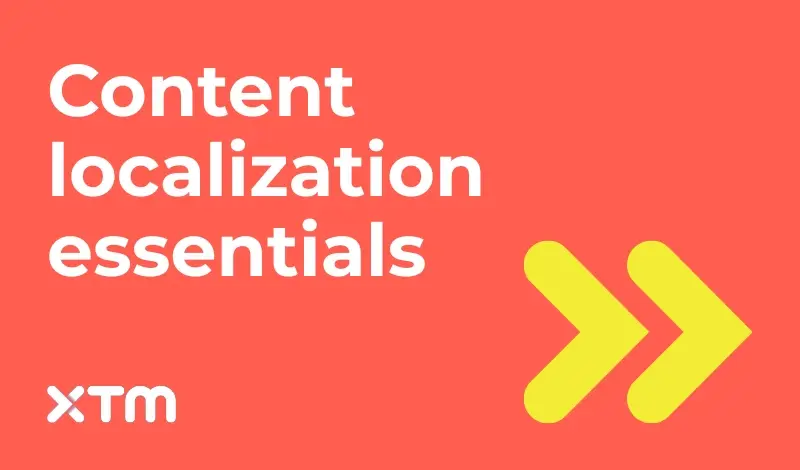Making English to Chinese translation work for your business
Reaching Chinese markets means connecting with the world’s largest pool of potential customers.
XTM’s AI-powered platform streamlines the process, enabling fast, cost-effective translation into both Simplified and Traditional Chinese — with built-in quality and consistency.
Whether you're targeting mainland China, Hong Kong, or Taiwan, XTM equips your team to scale confidently and localize with precision.
Book your 30-minute demo

Book your 30-minute demo

Trusted by teams at over 1,000 of the world’s leading organizations
Why English to Chinese translation is a must for global success
China is a huge growth opportunity for international brands. With over 918 million native speakers and the second largest economy in the world, entering the Chinese market isn’t just a good idea — it’s a no-brainer. Accurate English to Chinese translation is the key to getting traction in mainland China, Taiwan, Hong Kong and Chinese speaking communities around the world.
Chinese consumers are digitally savvy and brand aware. They expect content in their own language — even in areas where English is widely spoken. Research shows 76% of global consumers are more likely to buy products presented in their native language. This applies to retail, tech, healthcare and manufacturing sectors.
China’s digital ecosystem is also unique. To succeed on WeChat, Tmall and Weibo your message must go beyond direct translation — it must reflect local expectations, tone and cultural nuance.
Real results in English to Chinese translation. Not just promises.
Businesses using XTM for English to Chinese translation see faster turnaround times, fewer errors, and more consistent results across Simplified and Traditional Chinese.
Reduction in translation errors
Cost saving with machine translation
faster time-to-market
Common pitfalls in English to Chinese translation
Different scripts and regions
Chinese doesn’t have an alphabet, but thousands of characters. Simplified Chinese is used in mainland China, while Taiwan and Hong Kong use Traditional Chinese. Each has its own linguistic and cultural context so it’s essential to localise correctly.
Tonal meaning and cultural layers
Mandarin is a tonal language — meaning and interpretation can change dramatically with slight changes in tone. While tones are spoken, they influence how written language is structured and understood. A translator must understand this interplay to avoid unintended ambiguity or miscommunication.
Business and etiquette differences
Direct English phrases don’t translate well into Chinese business contexts where indirect communication, deference and formality are expected. Successful translation requires adaptation — not just of words but of style and intent.
Industry specific language
From medical devices to legal contracts and financial services industry terms need precise equivalents that comply with Chinese regulations. It’s not just about translation — it’s about linguistic accuracy, legal compliance and brand trust.
Translate smarter with XTM Cloud
XTM Cloud is an enterprise grade translation management system for complex multilingual content operations. It gives global teams the tools to manage English to Chinese translation at scale — with automation, AI and built in quality assurance to keep content accurate, consistent and compliant.
Whether you’re translating websites, ecommerce listings, technical documentation or marketing assets XTM Cloud simplifies the whole process — integrates with your existing tools and workflows.
How XTM Cloud helps you win in the Chinese market
Translation memory
Save time and cost by reusing previously translated content. XTM Cloud stores and suggests approved segments — ideal for repeated phrases in product descriptions, manuals and support content. This not only saves time but keeps terminology consistent across your brand.
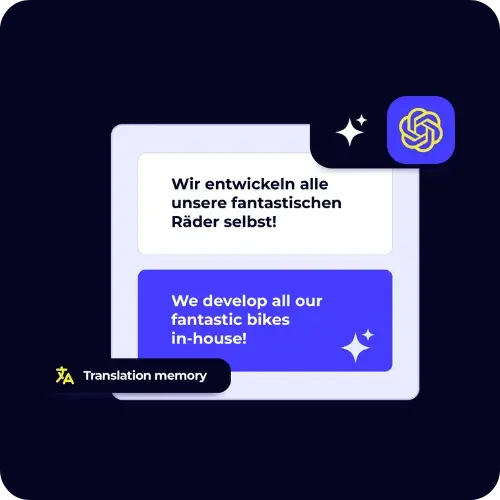
Terminology management
Keep your Chinese content on-brand with centralised glossaries and approved terminology. XTM highlights any inconsistencies and alerts translators in real-time. You can define preferred terms for product names, features or regulated language — avoiding costly errors and compliance issues.
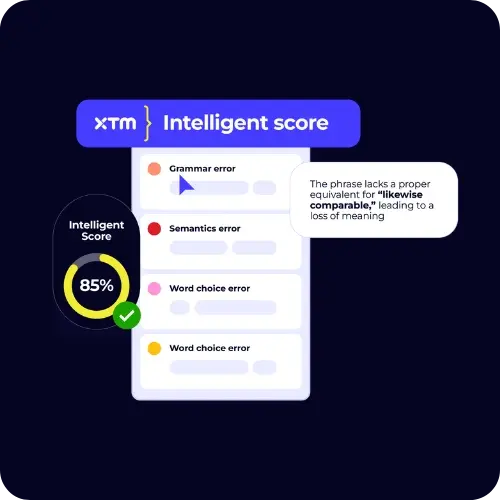
AI-assisted translation
Combine the speed of AI with the nuance of human translation. XTM Cloud integrates with leading MT engines and customises results based on your industry, tone and previous projects. Translators receive pre-translated drafts enhanced by contextual suggestions and quality indicators — so they can work faster without sacrificing accuracy.
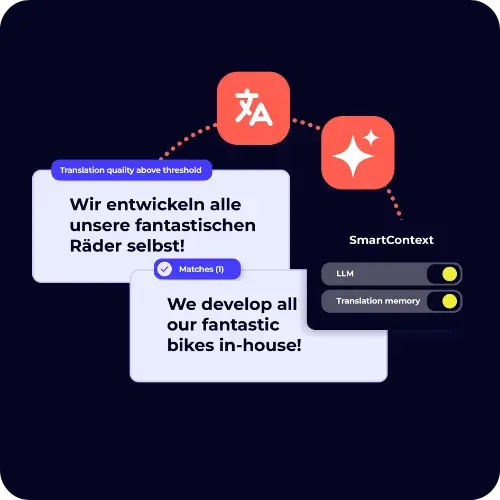
Collaborative workflows
Let teams across time zones and functions collaborate in real time. XTM Cloud supports role-based permissions, live commenting and automated handoffs between translators, reviewers and project managers. No more clunky email threads or versioning headaches.
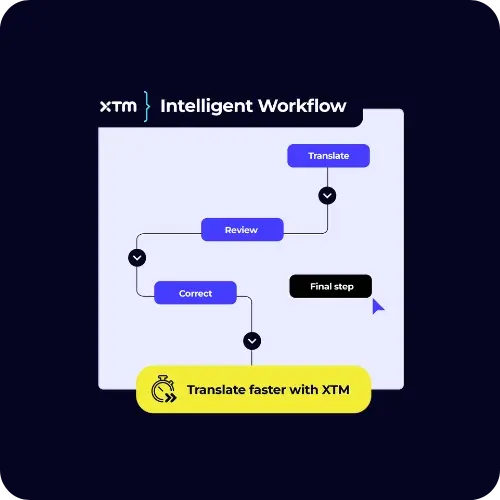
Why XTM Cloud is perfect for English to Chinese translation
Smart QA and consistency checks
Built-in quality checks catch issues like missing characters, punctuation mismatches and unapproved terms — before content goes live. You can tailor QA rules by content type, region or client so your Chinese translations meet both linguistic and regulatory standards.
Scale without stress
Manage large multilingual projects with ease. XTM Cloud automates repetitive tasks like file prep and assignments, while project templates and parallel workflows help you localise faster — without scaling your team.
Built-in security and governance
Your data is safe. XTM Cloud is ISO 27001 certified and supports enterprise level controls like SSO, 2FA and IP restrictions. Audit logs and access controls ensure your translation process meets GDPR and internal compliance policies.
Seamless integration
XTM Cloud plugs directly into your CMS, PIM, marketing platforms and dev environments. No more uploading files or manual updates — just content flow from source to publish, whether you’re using WordPress, Drupal, Adobe Experience Manager or GitHub.
Built-in AI for faster, safer Chinese localisation
AI is at the core of XTM’s approach to English to Chinese translation. Our platform intelligently prioritises content, assists linguists with real-time suggestions, and ensures every translation meets your quality and brand standards—whether you're translating 1,000 words or a million.
Intelligent Score
Evaluates the quality of Chinese translations using AI, measuring fluency, accuracy, and contextual relevance. Helps reviewers identify and prioritise problematic segments for faster turnaround.
Intelligent Workflow
SmartContext
Language Guard
Detects potentially offensive, non-compliant, or off-brand Chinese phrases in real time. Flags issues and suggests fixes directly in the editor to protect brand reputation.
Who uses our English to Chinese translation services
Marketing teams
Launch Chinese marketing campaigns that connect with local audiences while maintaining global brand consistency. XTM Cloud helps marketing teams manage multilingual campaigns efficiently, with visual previews and context-aware translation tools.
Product teams
Deliver fully localised products for Chinese markets with simplified string management, in-context translation previews, and automated deployment workflows. Perfect for software companies, mobile app developers, and SaaS providers.
Ecommerce companies
Translate product descriptions, customer reviews, and shopping experiences for Chinese consumers. XTM Cloud's integration capabilities work seamlessly with major ecommerce platforms and content management systems.
Healthcare companies
Translate regulated content like medical device instructions, pharmaceutical labelling, and clinical documentation while maintaining compliance with Chinese regulatory requirements.
Legal and financial firms
Translate sensitive document content with enterprise-grade security and compliance features. XTM Cloud supports complex legal and financial terminology while maintaining confidentiality and audit trails.
Key features of XTM's English to Chinese translation platform
Visual preview tools
See how your Chinese translations appear in the final layout before publication. XTM Cloud's visual preview feature helps translators understand context and make informed decisions about text length, formatting, and cultural adaptation. This is especially important for Chinese text, which can be significantly shorter or longer than English depending on the content type.
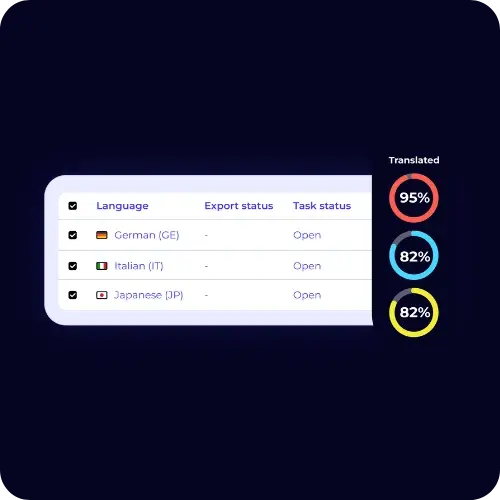




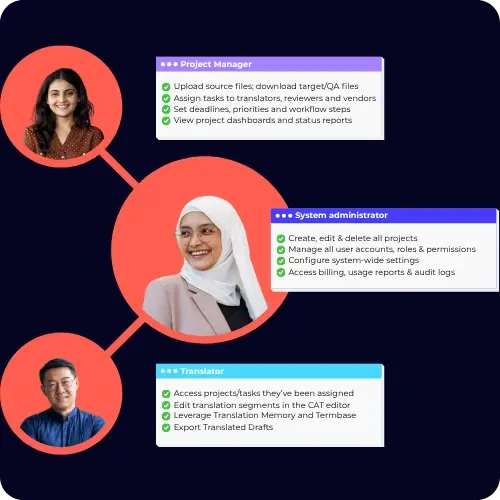
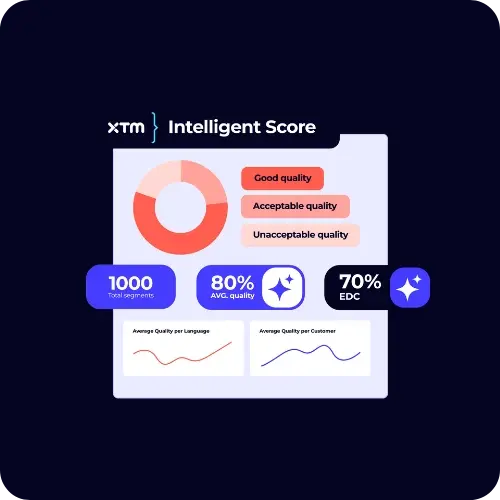














.png)

